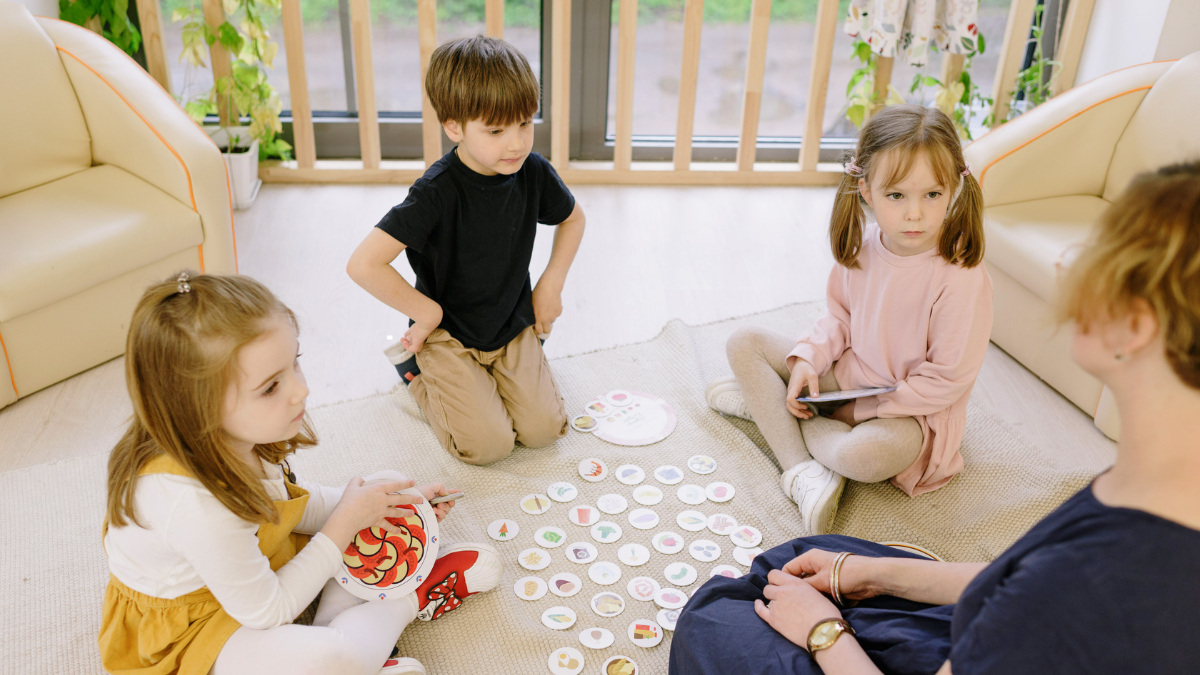Arguably, one of the greatest gifts you can present to children is to teach them how to pray. Prayer can be a powerful means of building a personal relationship with God, offering comfort, guidance, and tranquility. Although every family has their own routine for teaching prayer, it is crucial to establish an environment where children can experience the freedom of prayer naturally and meaningfully.
Here are some guidelines for teaching your children how to pray:
1. Begin in Youth and Be a Model
Children learn best by example, so be the model and lead by example when it comes to prayer. They are in the learning stage and absorb behaviors from their parents and caregivers. To make prayer a natural part of their lives, ensure you pray regularly in front of them.
-
Praying Aloud: Let your kids hear your prayers—whether you’re seeking guidance, expressing gratitude, or asking for God’s help. By hearing your prayers, they will understand the significance of prayer.
-
Prayer Every Day: Incorporate prayer into your daily routine. Don’t just pray at dinner, bedtime, or during stressful times—show them that prayer is part of everyday life.
-
Offer Simple Prayers: Start with simple and short prayers that your child can understand, like “Thank you, God, for today” or “Please help me to be kind.” These small prayers help establish a foundation for meaningful prayer.
As you model prayer, you create an atmosphere where your children will naturally see it as a vital part of their lives.
Related: How to Make Your Kids Feel Special Every Day
2. Teach Them About Basic Prayer
Children need to understand that prayer is simply a conversation with God. It’s an opportunity to share their thoughts and feelings, and to listen to His guidance. Here are the basics to teach them:
-
Prayer as a Conversation: Explain that prayer is like talking to a friend. They can talk to God about their gratitude, struggles, and needs.
-
Praise and Worship: Teach your children to begin prayers by glorifying God for His goodness and power. For example, “Thank you, God, because everything is good” or “You are the Creator of all things.”
-
Confession and Asking for Forgiveness: Help your child learn the importance of repentance. A simple prayer like, “God, I am sorry for not being kind,” teaches them the value of seeking forgiveness.
-
Gratitude: Encourage your children to thank God, whether for achievements or simple blessings. Let them name things they’re thankful for in their lives.
-
Supplication: Teach them that it’s okay to ask God for help, guidance, or blessings. Simple requests like, “Please help my friend feel better” or “Help me be brave today” are good examples.
By introducing these components of prayer, your child will better understand how to pray on their own.
Related: How to Make Your Kids Listen
3. Make a Prayer Routine
Incorporating prayer into daily life helps make it a natural habit. Here are ways to add prayer into your family’s routine:
-
Morning Prayer: Start your day with a family prayer. Ask God for direction and strength as you face the day ahead. Teach your children to pray for school, activities, and friends.
-
Mealtime Prayer: Before meals, say a simple prayer of gratitude. A prayer like “Thank you, God, for this food. Bless it and our bodies, please” sets a positive tone.
-
Bedtime Prayer: As a bedtime ritual, pray together and reflect on the day. Express gratitude for God’s protection and ask for peace during the night. A simple prayer like, “God, thank you for today. Please bless my family and help me sleep peacefully” is comforting.
-
Special Moments: Teach your children to pray during special moments or when facing challenges, such as when someone is sick, when they’re stressed, or on a friend’s birthday.
By making prayer a routine, children learn that prayer is for all parts of life.
Related: How to Make Your Kids Smarter
4. Prompt Personal Prayer
While praying together as a family is important, children should also know how to pray independently. Encourage and support your children in their personal prayer journey:
-
Find a Quiet Place: Help your child find a quiet, peaceful place to pray on their own. Whether it’s their room, a quiet corner, or outside in nature, having a space to talk to God without distractions is essential.
-
Give Them Time: Allow your children a few minutes each day to pray by themselves. Even if it’s just a thank-you prayer or a request, giving them this time fosters independence in their relationship with God.
-
Be Supportive: Praise your child’s personal prayers, whether simple or elaborate. Compliment their efforts and encourage them to keep praying daily.
By nurturing independent prayer, you teach your child to strengthen their connection with God.
Related: How To Make Your Kids Do Chores
5. Make Prayer Fun and Interactive
Since children’s attention spans can be short, it’s important to make prayer enjoyable and engaging. Here are some ideas to make prayer fun:
-
Prayer Jar: Create a prayer jar where family members write down prayer requests on slips of paper and place them in the jar. At the end of the week, take turns praying through the requests.
-
Prayer Stones: Use small stones or pebbles labeled with prayer points (such as family, friends, health, etc.). Let your child pick a stone each day and pray over that area.
-
Prayer Cards: Provide prayer cards with short prayers or Bible verses. Let your child pick one card to pray over each day.
-
Prayer Songs: Teach your child prayer through songs, such as children’s worship songs. Singing prayers helps make it memorable and enjoyable.
By making prayer interactive and fun, children will feel more engaged and connected to the process.
6. Compliment Them and Encourage Growth
Praise your children for their prayers, whether it’s thanking God at mealtime or praying about their day. When they are encouraged, they feel motivated to keep praying.
-
Recognize Their Prayers: Show your children that you appreciate their efforts, even if their prayers are simple. This affirmation encourages them to continue praying.
-
Promote Growth: As your child grows in their understanding of prayer, help them expand their prayers to include others, ask for guidance, and use their own words more confidently.
Creating a positive environment where prayer is celebrated and supported helps your child build a deeper relationship with God.
FAQ on Teaching Your Kids to Pray
1. When should I start teaching my child to pray?
You can begin teaching your child to pray as soon as they can understand simple language. Toddlers can learn basic prayers like “Thank you, God” or “Please help me.”
2. What if my child resists prayer?
If your child is resistant, don’t force it. Instead, include prayer in your daily routine and be a prayer example. Encourage them to pray in their own time, without pressure.
3. How do I explain God to my child?
Keep it simple and relate God to things your child understands. For example, you could say that God is like a loving parent who listens and cares for them.
4. How can I encourage my child to pray on their own?
Provide them with a quiet space for prayer, praise their efforts, and encourage them to express their thoughts and feelings to God.
5. What if my child doesn’t know what to pray for?
Start with simple prayer prompts like thanking God for family, friends, and food. Gradually, your child will develop their own ideas for prayer.
Teaching your children to pray is a lifelong task that requires patience, consistency, and love. By modeling prayer, creating the right environment, and making it fun, you will help your child develop a meaningful and enduring relationship with God.
Save the pin for later




